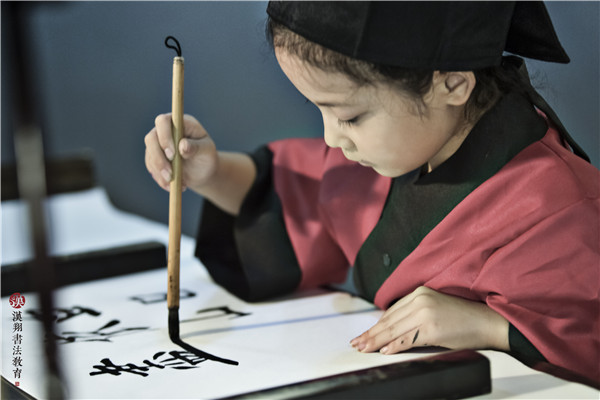 |
|
Children learn to put their hearts on Chinese characters while writing traditional calligraphy with ink and brushes. [Photo provided to China Daily] |
Parents are discovering the benefits of getting their kids to learn calligraphy. Deng Zhangyu reports.
Dressed in traditional Chinese dress, called hanfu, with a long plait hanging down her back, 9-year-old Zhang Linxi introduced her artworks-two calligraphies and two ink paintings of birds and flowers-to those who stopped by her works during an exhibition in Beijing's 798 Art District in June.
The three-day show featured works by about 360 calligraphy and ink painting lovers, many of whom were children aged between 5 and 10.
Linxi, a 4th-grade primary student, has been studying calligraphy for two years. She has a practice room at home, with ink brushes, ink stones and seals bought by her father from fancy stores.
"We encourage her to learn calligraphy. It's a good way to learn about our culture," says her mother. "It helps her gain wisdom and fosters identification with Chinese culture."
"Most parents, who can afford it, appreciate art education, and they regard calligraphy as a gateway to traditional Chinese culture," says Li Xiaoya, CEO of Beijing-based Hanxiang, a franchised calligraphy training school, who organized the 798 exhibition.
Learning calligraphy also means learning classical poems because the written scripts are excerpts from poetry from the Tang (618-907) and Song (960-1279) dynasties. Calligraphy students also have to learn traditional seal-making skills since each piece of calligraphy has a name printed with a seal.
"It's more than just calligraphy. It's about Chinese history and culture as well," Li says.